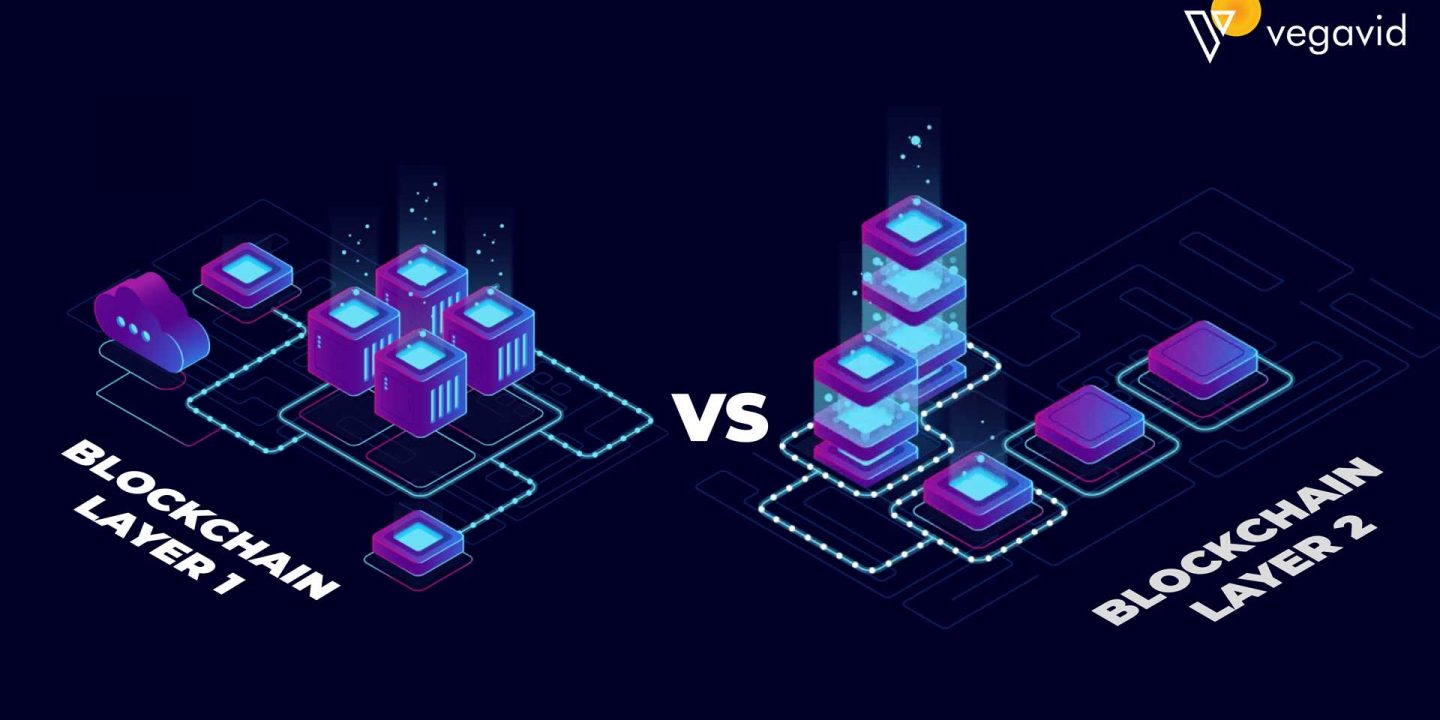
Layer 1 blockchain is the underlying infrastructure of a blockchain network. It is responsible for processing and validating transactions and maintaining the ledger of all activity. Layer 2 blockchain is an extension of layer 1, designed to improve scalability and speed. It does this by introducing new ways of processing and validating transactions without compromising security. This blog post will explore the differences between layer one and layer two blockchains and how they can work together to provide a more scalable and efficient blockchain network.
List of Layer 1 blockchains
A blockchain is a digital ledger of all cryptocurrency transactions. It is constantly growing as “completed” blocks are added to it with a new set of recordings. Each block contains a cryptographic hash of the previous block, a timestamp, and transaction data. Bitcoin nodes use the blockchain to differentiate legitimate Bitcoin transactions from attempts to re-spend coins that have already been spent elsewhere. Layer 1 blockchains are the foundation of the blockchain ecosystem, providing the security and scalability upon which all other protocols and applications are built. This article will list some of the most popular Layer 1 blockchains in operation today.
- Bitcoin is the original cryptocurrency and still the most widely used and valuable coin. Its blockchain is secure and scalable, making it ideal for use as a foundation for other protocols and applications.
- Ethereum: Ethereum is a decentralized platform that runs smart contracts: applications that run exactly as programmed without any possibility of fraud or third-party interference. Its blockchain is highly configurable and can be used to build a wide variety of decentralized applications.
- Ripple: Ripple is a real-time gross settlement system (RTGS), currency exchange, and remittance network built on a distributed ledger database. It is designed to provide global financial settlements in real time, with low transaction costs and high scalability.
List of Layer 2 blockchains
Layer blockchain, also known as Layer 2 blockchain, is a type of blockchain that runs on top of another blockchain. By doing so, it can take advantage of the underlying blockchain’s security and trustlessness. There are many different types of Layer 2 blockchains, each with its own benefits and drawbacks. Below is a list of some of the more popular ones:
- Plasma: A highly scalable Layer 2 solution that Ethereum co-founder Vitalik Buterin has endorsed.
- Lightning Network: Probably the most well-known Layer 2 solution that is currently available. It is powering the BTCPayServer project.
- HoneyBadgerBFT: A permissionless and trustless consensus protocol that can be used to build zero-knowledge Proof-of-Stake (zk-PoS) systems.
- Liquidity Network: A Layer 2 solution that uses Reed–Solomon error correction coding to achieve scalability.
- Rollups: A type of Layer 2 solution that aggregates multiple transactions into a single transaction before sending it to the main chain. This greatly reduces the amount of data that needs to be stored on chain.
Vegavid Blockchain Development Services
What makes scalability essential?
With the ever-growing popularity of blockchain technology, it is more important than ever for businesses to have a scalable solution that can handle increasing transactions. The scalability of a blockchain solution is essential for businesses that want to maintain a competitive edge and keep up with the demand for their services.
A scalable blockchain solution will allow businesses to handle a large number of transactions without sacrificing security or performance. This is essential for businesses that rely on blockchain technology to power their operations. A scalable solution will also help businesses save money on transaction fees and reduce the time it takes to process transactions.
There are many factors that contribute to the scalability of a blockchain solution. The size of the network, the type of consensus algorithm used, and the number of transactions per second that can be processed all play a role in how scalable a solution is. Businesses should carefully consider these factors when choosing a blockchain solution for their needs.
What Causes Scalability Issues in Blockchain Networks?
There are a few primary factors that contribute to scalability issues within blockchain networks:
- -The number of transactions that can be processed per second is limited – This is due to the fact that each node in the network must validate each and every transaction that takes place, which can lead to bottlenecks when there is a large volume of transactions taking place.
- -Data storage requirements – Each node in a blockchain network must store a complete copy of the blockchain, which can become very large and unwieldy over time. This can put a strain on node resources, especially as the blockchain grows.
- -Network latency – The time it takes for a transaction to be propagated throughout the network can vary depending on network conditions, which can impact the overall speed at which transactions can be processed.
The difference between Layer 1 and Layer 2
| Blockchain Layer 1 | Blockchain Layer 2 |
| Layer 1 is the physical layer responsible for transmitting bits over a physical medium. | Layer 2 is the data link layer, which is responsible for physically transmitting data on the network. |
| It is responsible for transmitting raw data bits over the network. | It is responsible for providing reliable connections between nodes on the network. |
| Transmits frames between devices. | Frames cannot be transmitted between frames. |
| Signals are sent as electrical pulses | Signals are sent as digital packets |
| Data is transmitted in one direction at a time. | Data can be transmitted in both directions simultaneously. |
Blockchain Benefits and limitations of Layer 1 blockchain
There are many benefits to layer 1 blockchain technology. The first and most obvious benefit is that it provides a tamper-proof ledger of all transactions that have taken place on the network. This is because each block in the chain is linked to the previous block through a cryptographic hash, meaning that it would be very difficult for someone to go back and change transaction data without being detected.
Another benefit of layer one blockchain is that it can be used to create trustless systems. For example, when two parties want to enter into a contract, they can do so without needing to trust each other or rely on a third party, such as a bank or government, to enforce the contract. This is because the contract can be written into the blockchain itself and will automatically execute when certain conditions are met.
However, there are also some limitations to layer 1 blockchain technology. One of the main limitations is scalability. Because each block in the chain needs to be verified by all nodes in the network, this can lead to slow transaction times and high fees when the network is congested. Another limitation is that layer-one blockchain platforms are often quite complex and difficult for non-technical users to understand or use.
Benefits and limitations of Layers 2 blockchain
A layer two blockchain is a type of blockchain that runs on top of an existing blockchain. It is often used to improve the scalability of a blockchain by allowing transactions to be processed off-chain. Layer 2 solutions are often seen as a way to scaling blockchains without compromising their security or decentralization. However, there are also some drawbacks to using a layer two solution.
Benefits:
- Increased scalability: By processing transactions off-chain, a layer two blockchain can greatly increase the number of transactions that can be processed per second.
- Reduced costs: Transactions on a layer two blockchain are often cheaper than those on the main chain, as they do not need to be recorded on the main chain.
- Improved privacy: Layer 2 solutions can offer improved privacy for users, as their transactions are not visible on the main chain.
Limitations:
- Complexity: Layer 2 solutions can be complex to set up and use, which may limit their adoption.
- Security: As layer two solutions are built on top of existing blockchains, they inherit the security risks of those chains. The layer two solutions may also be at risk if the main chain is compromised.
- Single point of failure: A layer two solution relies on the main chain for its security and stability. If the main chain fails, layer two solutions will also fail.
What Is the Future of Layer 1 and Layer 2?
Layer 1 and 2 blockchains are both important aspects of the blockchain ecosystem. Each has its own advantages and disadvantages, and each is likely to continue to play a role in the future development of blockchain technology.
Layer 1 blockchains, such as Bitcoin and Ethereum, are the foundation upon which all other blockchains are built. They are secure, decentralized, and offer a high degree of transparency. However, they are also slow and expensive to use.
Layer 2 solutions, such as Lightning Network and Plasma, aim to address the scalability issues of Layer 1 blockchains. They do this by creating an off-chain network that can handle a large number of transactions without overburdening the main chain. However, these solutions are not yet fully developed and remain somewhat experimental.
It is likely that both Layer 1 and Layer 2 solutions will continue to be used in the future. However, it is also possible that new breakthroughs will lead to the development of even more efficient solutions that combine the best features of both layers.
Conclusion
There are many different aspects to consider when choosing between a blockchain layer 1 and layer 2 solutions. Layer 1 solutions offer more security and are more resistant to attacks, but they can be slower and more expensive. Layer 2 solutions are faster and cheaper, but they may be less secure. Ultimately, the decision comes down to your specific needs and requirements. If security is your top priority, then layer 1 is the way to go. But if you need speed and efficiency, then layer 2 is the better option











